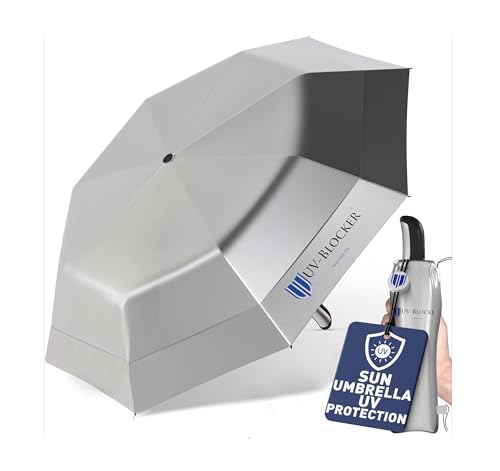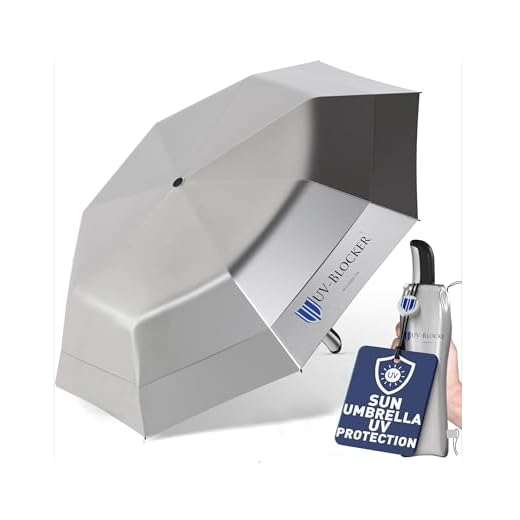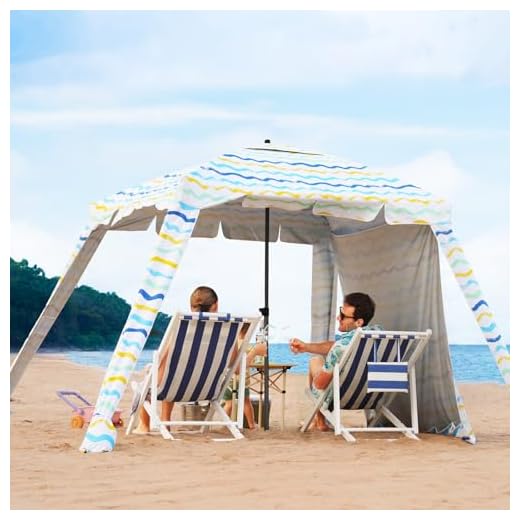
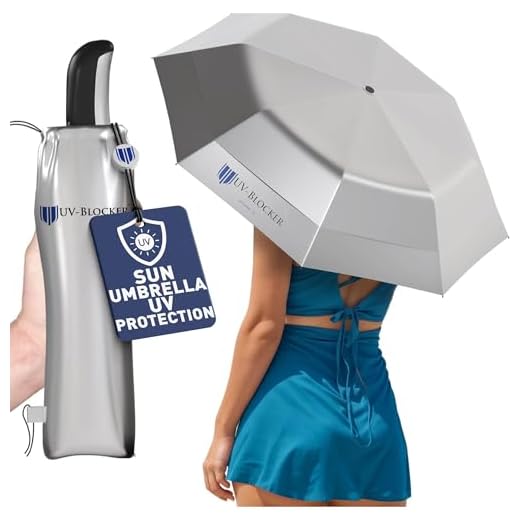
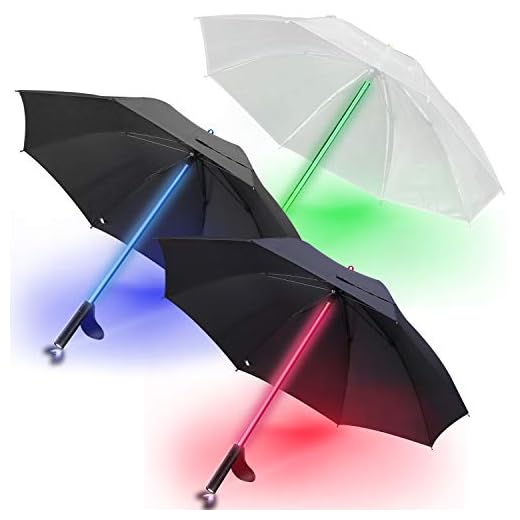
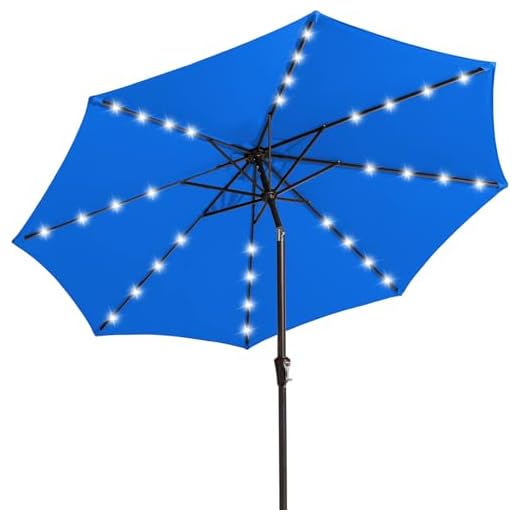
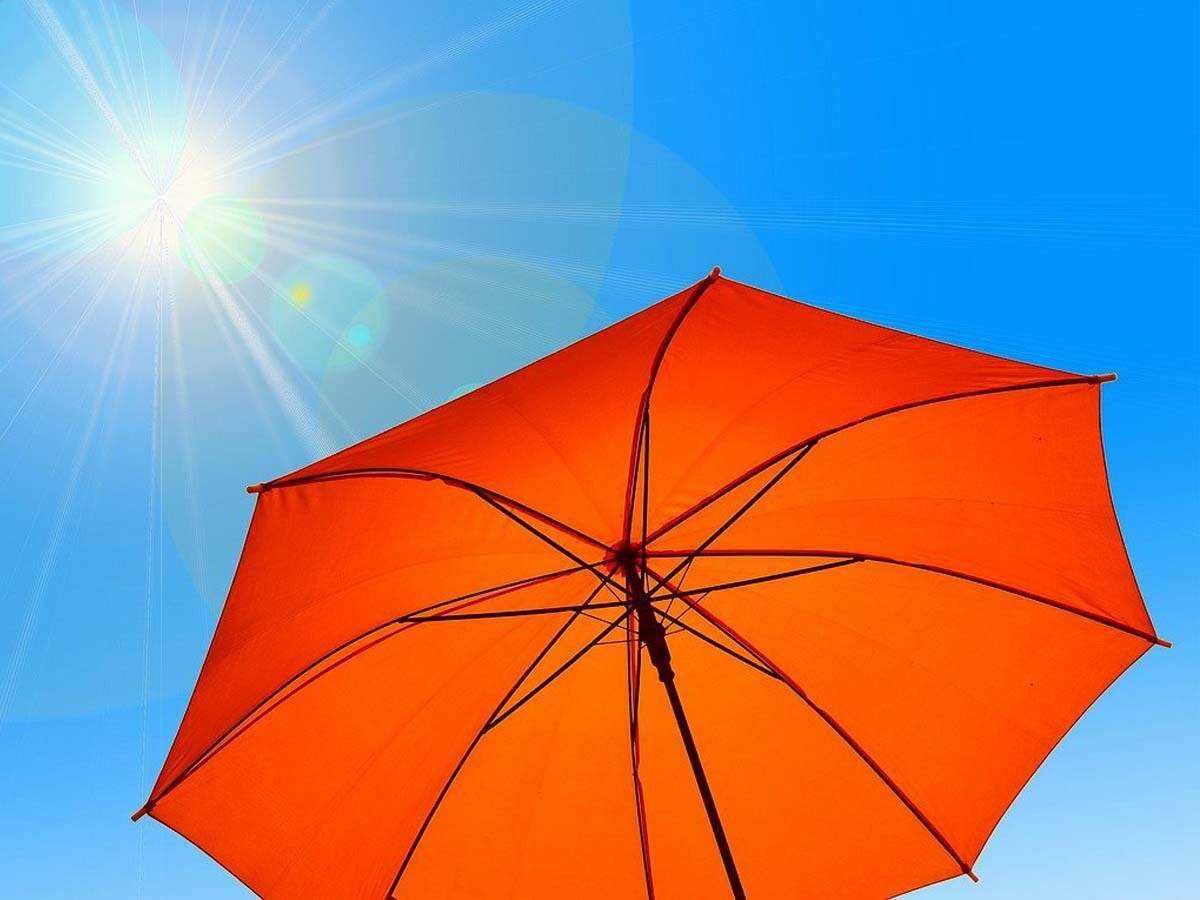
For optimal protection against harsh rays, dark shades such as navy blue or charcoal gray are top picks. These hues absorb more sunlight, providing a cooler shaded area. Light colors, on the other hand, reflect sunlight but may not offer the same level of comfort.
This article discusses various shades suitable for canopies, helping outdoor enthusiasts, beachgoers, and anyone seeking relief from heat make informed choices. It highlights how specific colors and materials can impact temperature and UV protection.
In addition, the piece provides insights into fabric types that enhance sun protection, emphasizing UPF ratings. You’ll discover practical tips for selecting the right accessory for your needs, ensuring enjoyable outdoor experiences without the discomfort of excessive heat.
Best Color Umbrella to Beat the Sun
Opting for darker shades can significantly enhance protection against harmful ultraviolet rays. Deep hues, such as navy blue or charcoal gray, absorb more sunlight, preventing it from reaching your skin. This characteristic makes them an excellent choice for outdoor activities when shielding yourself from potential sun damage is essential.
Additionally, lighter tones reflect sunlight, which can help keep the area beneath the canopy cooler. Shades like white or light beige are effective at bouncing back heat. However, it’s crucial to ensure that these options are treated with UV-blocking materials to maximize their protective qualities.
Factors to Consider
- Material: Fabrics with UV protection coatings are preferable.
- Size: A larger canopy offers more shaded space, enhancing comfort.
- Durability: Wind-resistant designs can prevent damage during breezy conditions.
In summary, selecting an appropriate hue and ensuring the material provides adequate UV protection can greatly impact your outdoor experience. Making an informed choice allows for enjoyable moments outside while minimizing health risks associated with prolonged sun exposure.
Understanding UV Protection: The Role of Colors
Choosing a shade for shielding against ultraviolet rays can significantly impact its effectiveness. Dark hues, such as black or navy, tend to absorb more sunlight, providing better protection from harmful rays. In contrast, lighter shades, while aesthetically pleasing, may allow more UV radiation to penetrate, making them less effective for sun protection.
Research indicates that certain pigments enhance the ability to block UV radiation. For instance, deep reds and blues often outperform lighter tones in terms of UV absorption. Fabrics treated with specific chemicals can further enhance their protective qualities, regardless of the initial color.
Factors Influencing UV Protection
- Fabric Type: The material’s weave and density play a critical role in UV resistance. Tightly woven fabrics generally provide better protection.
- Color Absorption: Dark shades are more effective at absorbing UV rays, while lighter shades may reflect them but allow more penetration.
- Treatment: Some materials undergo treatments that enhance UV blocking capabilities, adding an extra layer of defense against harmful rays.
While aesthetics are important, prioritizing UV protection should guide your selection. Consider combinations of color and fabric type to maximize your defense against ultraviolet exposure.
Shades for Maximum Heat Reflection
For optimal heat reflection, certain hues excel in repelling solar rays. Light tones, particularly white and light pastels, are highly effective in minimizing heat absorption, keeping the surface cooler. These shades reflect a significant portion of sunlight, thus enhancing comfort during hot weather.
In addition to light colors, metallic finishes can also provide excellent heat reflectivity. Silver or chrome-like surfaces not only offer a stylish appearance but also serve to bounce back sunlight efficiently, reducing the overall temperature beneath.
Considerations for Optimal Selection
- Light Tones: White and pastel shades remain at the forefront for their reflective properties.
- Metallic Finishes: Reflective metallics can drastically lower heat absorption.
- Fabric Technology: Look for materials specifically designed to reflect UV rays.
Choosing the right hue is paramount for maintaining a comfortable environment while enjoying outdoor activities.
Light vs. Dark: Which Shades Keep You Cooler?
Light shades are significantly more effective at reflecting heat and light than darker tones. For instance, white or pastel options can reduce the amount of absorbed heat, keeping the user cooler underneath. Scientific studies have shown that light colors can lower surface temperatures by several degrees compared to their darker counterparts.
Conversely, dark tones tend to absorb more heat, leading to increased temperatures beneath. While some might argue that darker designs can offer a stylish appearance, they often translate to discomfort on hot days. Choosing lighter hues is a practical decision for those seeking relief from high temperatures.
Mechanism of Temperature Regulation
The principle behind this temperature difference lies in light absorption and reflection. Dark shades absorb a substantial amount of solar energy, converting it into heat, whereas lighter shades reflect a significant portion of that energy.
- Reflectivity: Lighter colors reflect more sunlight.
- Heat Absorption: Darker colors absorb more heat, leading to higher temperatures.
While aesthetics play a role in personal preference, the practical aspect of choosing a lighter shade for sun protection cannot be overlooked.
| Color Type | Heat Absorption | Surface Temperature |
|---|---|---|
| Light | Low | Cooler |
| Dark | High | Warmer |
In summary, opting for lighter shades is a smart choice for staying cooler. Whether for personal use or outdoor activities, the color selection plays a vital role in comfort during warm weather.
Popular Color Choices for Outdoor Umbrellas
Bright shades such as red, yellow, and orange are often favored for their ability to create a lively and inviting atmosphere. These hues can enhance outdoor spaces, making them feel more cheerful and warm. Additionally, they tend to stand out, which can be beneficial for locating your canopy in busy areas.
On the other hand, neutral tones like beige, gray, and white are chosen for their versatility. These colors blend seamlessly with different environments and furnishings, providing a sophisticated look. They also reflect sunlight effectively, aiding in temperature regulation beneath the shade.
Considerations for Color Selection
When selecting a shade for a protective canopy, consider the following:
- Location: Areas with intense sunlight may benefit from darker colors that absorb heat, while shaded regions can use lighter shades to maintain a cool atmosphere.
- Durability: Some pigments fade faster than others under UV exposure. Opt for UV-resistant materials to prolong the vibrancy of your choice.
- Aesthetics: The selected color should complement existing outdoor furniture and landscaping to create a cohesive look.
Ultimately, the decision hinges on personal preference and the specific outdoor setting. Experimenting with various shades can lead to a unique and enjoyable outdoor experience.
Maintenance Tips for Your Colorful Sunshade
Regular upkeep ensures durability and functionality of your shade structure. Begin with routine cleaning to remove dirt and debris that can degrade materials over time.
Utilize a soft brush or cloth along with mild soap and water for effective cleaning. Avoid harsh chemicals that can damage fabrics or coatings.
Storage Guidelines
Proper storage extends the lifespan of your shade. Always dry it thoroughly before folding or packing away to prevent mold and mildew.
- Store in a cool, dry place.
- Avoid exposure to direct sunlight when not in use.
- Use a protective cover if available to shield from dust and moisture.
Inspection Routine
Periodic checks for wear and tear can prevent costly repairs. Pay attention to:
- Seams and stitching for fraying.
- Frame integrity for rust or damage.
- Fabric color fading due to UV exposure.
Repair Tips
If you notice any damage, address it immediately. Small rips can be mended with fabric adhesive or patches, while frame issues may require professional repairs.
In conclusion, diligent care and maintenance of your shade not only prolongs its life but also enhances your outdoor experience. Regular cleaning, proper storage, and timely repairs are key to maintaining its functionality and appearance.
Best color umbrella to beat the sun
Features
| Part Number | 741360281271 |
| Model | 741360281271 |
| Color | Navy Blue and Silver |
| Size | 58" |
Features
| Part Number | BT-CH |
| Model | BT-CH |
| Color | blue&white |
Features
| Part Number | FBA_741360281158 |
| Model | FBA_741360281158 |
| Color | Reflective Silver |
| Size | 44" |
Features
| Part Number | UM-L133 |
| Model | UM-L133 |
| Color | Clear/Black/Gray |
| Size | 46 inches |
Features
| Part Number | 001 |
| Color | Royal Blue |
| Size | 9FT |
Features
| Part Number | 9-LN-BLK-SUN-TERRA-A |
| Color | Sunbrella Terracotta |
| Size | 9 Feet |
Video:
FAQ:
What color umbrella is best for sun protection?
To effectively protect against the sun, darker colors are usually more effective than lighter ones. A navy blue, black, or dark green umbrella tends to absorb more UV rays, preventing them from reaching your skin. However, it’s important to note that these colors may also absorb more heat. For a balance of heat and UV protection, a dark color with a reflective lining can be a great choice.
Do light-colored umbrellas provide any sun protection?
Light-colored umbrellas, such as white or pastel shades, are often less effective at blocking UV rays compared to darker colors. However, they can reflect some sunlight, keeping you cooler under the umbrella. If you prefer a light-colored option, look for umbrellas that include UV protection coatings, which can enhance their effectiveness against harmful rays.
Are there specific materials in umbrellas that improve sun protection?
Yes, the material of an umbrella plays a significant role in its sun protection capabilities. Fabrics like polyester and nylon are commonly used and can be treated with UV-blocking agents. An umbrella made from these materials, especially with a high denier count, can provide better protection from UV rays. Additionally, an umbrella with a silver or reflective coating on the inside can also enhance its protective qualities against the sun.
What features should I look for in an umbrella for sunny weather?
When choosing an umbrella for sunny weather, look for features like a high UPF (Ultraviolet Protection Factor) rating, which indicates how much UV radiation can penetrate the fabric. A vented canopy can help reduce wind resistance and keep the umbrella stable. Also, consider an ergonomic handle for comfort, and a lightweight but sturdy frame that makes it easy to carry. Some umbrellas also come with a tilt function, allowing you to adjust the angle for optimal sun coverage throughout the day.
Is there a difference between beach umbrellas and regular umbrellas for sun protection?
Yes, beach umbrellas are specifically designed for sun protection and are generally larger and more stable than regular umbrellas. They often have a higher UPF rating and are made from materials that resist fading and damage from saltwater and sand. Additionally, beach umbrellas typically feature a sand anchor or spike to secure them in the ground, making them more suitable for outdoor use in windy conditions. Regular umbrellas may not provide the same level of stability or coverage, especially in open areas like beaches.

